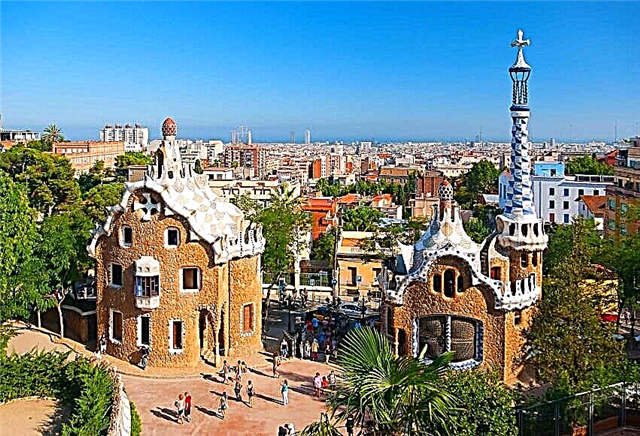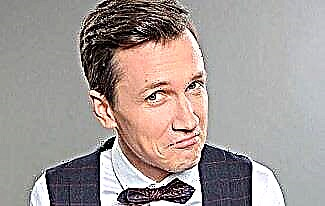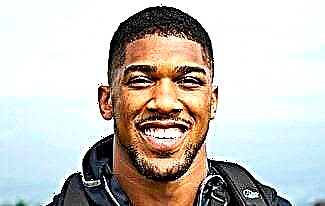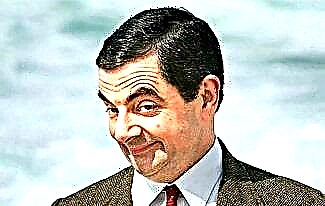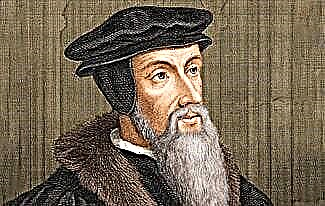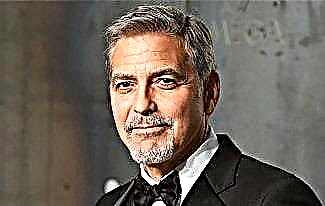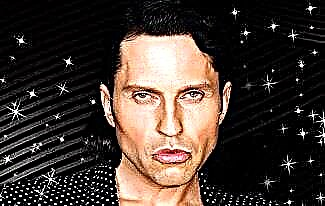Semyon Mikhailovich Budyonny (1883-1973) - Soviet military leader, one of the first marshals of the Soviet Union, three times Hero of the Soviet Union, full holder of the St. George Cross and St. George Medal of all degrees.
Commander-in-Chief of the First Cavalry Army of the Red Army during the Civil War, one of the main organizers of the red cavalry. The soldiers of the First Cavalry Army are known under the collective name “Budennovtsy”.

There are many interesting facts in the biography of Budyonny, which we will talk about in this article.
So, before you is a short biography of Semyon Budyonny.
Biography of Budyonny
Semyon Budyonny was born on April 13 (25), 1883 on the Kozyurin farm (now the Rostov region). He grew up and was brought up in a large peasant family of Mikhail Ivanovich and Melania Nikitovna.
Childhood and youth
The hungry winter of 1892 forced the head of the family to borrow money from a merchant, but Budyonny Sr. could not return the money on time. As a result, the lender offered the peasant to give him his son Semyon as a laborer for 1 year.
The father did not want to agree to such a humiliating proposal, but he also saw no other way out. It is worth noting that the boy did not hold a grudge against his parents, but, on the contrary, wanted to help them, as a result of which he went to serve the merchant.
After a year, Semyon Budyonny never returned to his parental home, continuing to serve the owner. A few years later he was sent to help the blacksmith. At this time in the biography, the future marshal realized that if he did not receive the appropriate education, he would serve someone for the rest of his life.
The teenager agreed with the merchant clerk that if he taught him to read and write, then he, in turn, would do all the household work for him. It is worth noting that on weekends, Semyon came home, spending all his free time with close relatives.
Budyonny Sr. masterfully played the balalaika, while Semyon mastered playing the harmonica. An interesting fact is that in the future Stalin will repeatedly ask him to perform "The Lady".
One of Semyon Budyonny's favorite hobbies was horse racing. At the age of 17, he became the winner of the competition, timed to coincide with the arrival of the Minister of War in the village. The minister was so surprised that the young man overtook the experienced Cossacks on horseback that he gave him a silver ruble.
Soon Budyonny changed several professions, having managed to work at a thresher, a fireman and a machinist. In the fall of 1903, the guy was drafted into the army.
Military career
At this time in his biography, Semyon was in the troops of the Imperial Army in the Far East. Having paid his debt to his homeland, he remained in long-term service. He took part in the Russo-Japanese War (1904-1905), showing himself to be a brave soldier.
In 1907, Budyonny, as the best rider of the regiment, was sent to St. Petersburg. Here he mastered horse riding even better, having completed training at the Officer Cavalry School. The following year, he returned back to the Primorsky Dragoon Regiment.

During the First World War (1914-1918) Semyon Budyonny continued to fight on the battlefield as a non-commissioned officer. For his courage he was awarded the St. George Crosses and medals of all 4 degrees.
The man received one of the St. George's crosses for being able to take prisoner a large German convoy with rich food. It is worth noting that at the disposal of Budyonny there were only 33 fighters who were able to capture the train and capture about 200 well-armed Germans.
In the biography of Semyon Mikhailovich there is a very interesting case that could turn into a tragedy for him. One day, a senior officer began to insult him and even hit him in the face.
Budyonny could not restrain himself and gave back to the offender, as a result of which a big scandal erupted. This led to the fact that he was deprived of the 1st St. George's Cross and was reprimanded. It is curious that after a few months Semyon was able to return the award for another successful operation.
In mid-1917, the cavalryman was transferred to Minsk, where he was entrusted with the post of chairman of the regimental committee. Then he, together with Mikhail Frunze, controlled the process of disarming Lavr Kornilov's troops.
When the Bolsheviks came to power, Budyonny formed a cavalry detachment, which took part in battles with whites. After that, he continued to serve in the first cavalry peasant regiment.
Over time, they began to trust Semyon to command more and more troops. This led to the fact that he led an entire division, enjoying great authority with subordinates and commanders. At the end of 1919, the Horse Corps was founded under the leadership of Budyonny.
This unit successfully fought against the armies of Wrangel and Denikin, having managed to win many important battles. At the end of the Civil War, Semyon Mikhailovich was able to do what he loved. He built equestrian enterprises, which were engaged in horse breeding.

As a result, the workers developed new breeds - "Budennovskaya" and "Terskaya". By 1923, the man had become an assistant to the commander-in-chief of the Red Army for cavalry. In 1932 he graduated from the Military Academy. Frunze, and after 3 years he was awarded the honorary title of Marshal of the Soviet Union.
Despite Budyonny's undeniable authority, there were many who accused him of betraying his former colleagues. So, in 1937 he was a supporter of the shooting of Bukharin and Rykov. Then he supported the shooting of Tukhachevsky and Rudzutak, calling them scoundrels.
On the eve of the Great Patriotic War (1941-1945) Semyon Budyonny became the first deputy commissar of defense of the USSR. He continued to proclaim the importance of cavalry at the front and its effectiveness in maneuvering attacks.
By the end of 1941, over 80 cavalry divisions had been created. After that, Semyon Budyonny commanded the armies of the Southwestern and Southern fronts, which defended Ukraine.
On his order, the Dnieper hydroelectric power station was blown up in Zaporozhye. Powerful streams of gushing water led to the death of a large number of fascists. Nevertheless, many Red Army soldiers and civilians died. Industrial equipment was also destroyed.
The marshal's biographers are still arguing about whether his actions were justified. Later Budyonny was assigned to command the Reserve Front. And although he was in this position for less than a month, his contribution to the defense of Moscow was significant.
At the end of the war, the man was engaged in the development of agricultural activities and animal husbandry in the state. He, as before, paid great attention to horse factories. His favorite horse was called Sophist, who was so strongly attached to Semyon Mikhailovich that he determined his approach by the sound of a car engine.
An interesting fact is that after the death of the owner, the Sophist cried like a man. Not only the breed of horses was named after the famous marshal, but also the famous headdress - budenovka.
A distinctive feature of Semyon Budyonny is his "luxurious" mustache. According to one version, in his youth one mustache of Budyonny allegedly "turned gray" because of the outbreak of gunpowder. After that, the guy initially tinted his mustache, and then decided to shave them off altogether.
When Joseph Stalin found out about this, he stopped Budyonny by joking that it was no longer his mustache, but a folk mustache. Whether this is true is unknown, but this story is very popular. As you know, many Red commanders were repressed, but the marshal still managed to survive.

There is also a legend about this. When the "black funnel" came to Semyon Budyonny, he allegedly took out a saber and asked "Who is the first ?!"
When Stalin was reported about the commander's trick, he only laughed and praised Budyonny. After that, no one bothered the man anymore.
But there is another version, according to which the cavalryman began to shoot at the "guests" from a machine gun. They got scared and immediately went to complain to Stalin. Having learned about the incident, the Generalissimo ordered not to touch Budyonny, stating that "the old fool is not dangerous."
Personal life
Over the years of his personal biography, Semyon Mikhailovich was married three times. His first wife was Nadezhda Ivanovna. The girl died in 1925 as a result of careless handling of firearms.
The second wife of Budyonny was the opera singer Olga Stefanovna. Interestingly, she was 20 years younger than her husband. She had many novels with various foreigners, as a result of which she was under the close supervision of the NKVD officers.
Olga was detained in 1937 on suspicion of espionage and an attempt to poison the marshal. She was forced to testify against Semyon Budyonny, after which she was exiled to a camp. The woman was released only in 1956 with the assistance of Budyonny himself.

It is worth noting that during Stalin's life, the marshal thought that his wife was no longer alive, since this was exactly what the Soviet secret services reported to him. Subsequently, he helped Olga in a variety of ways.
For the third time, Budyonny went down the aisle with Maria, the cousin of his second wife. It is curious that he was 33 years older than his chosen one, who loved him very much. In this union, the couple had a girl, Nina, and two boys, Sergei and Mikhail.
Death
Semyon Budyonny died on October 26, 1973 at the age of 90. The cause of his death was a cerebral hemorrhage. The Soviet marshal was buried at the Kremlin wall on Red Square.
Budyonny Photos












